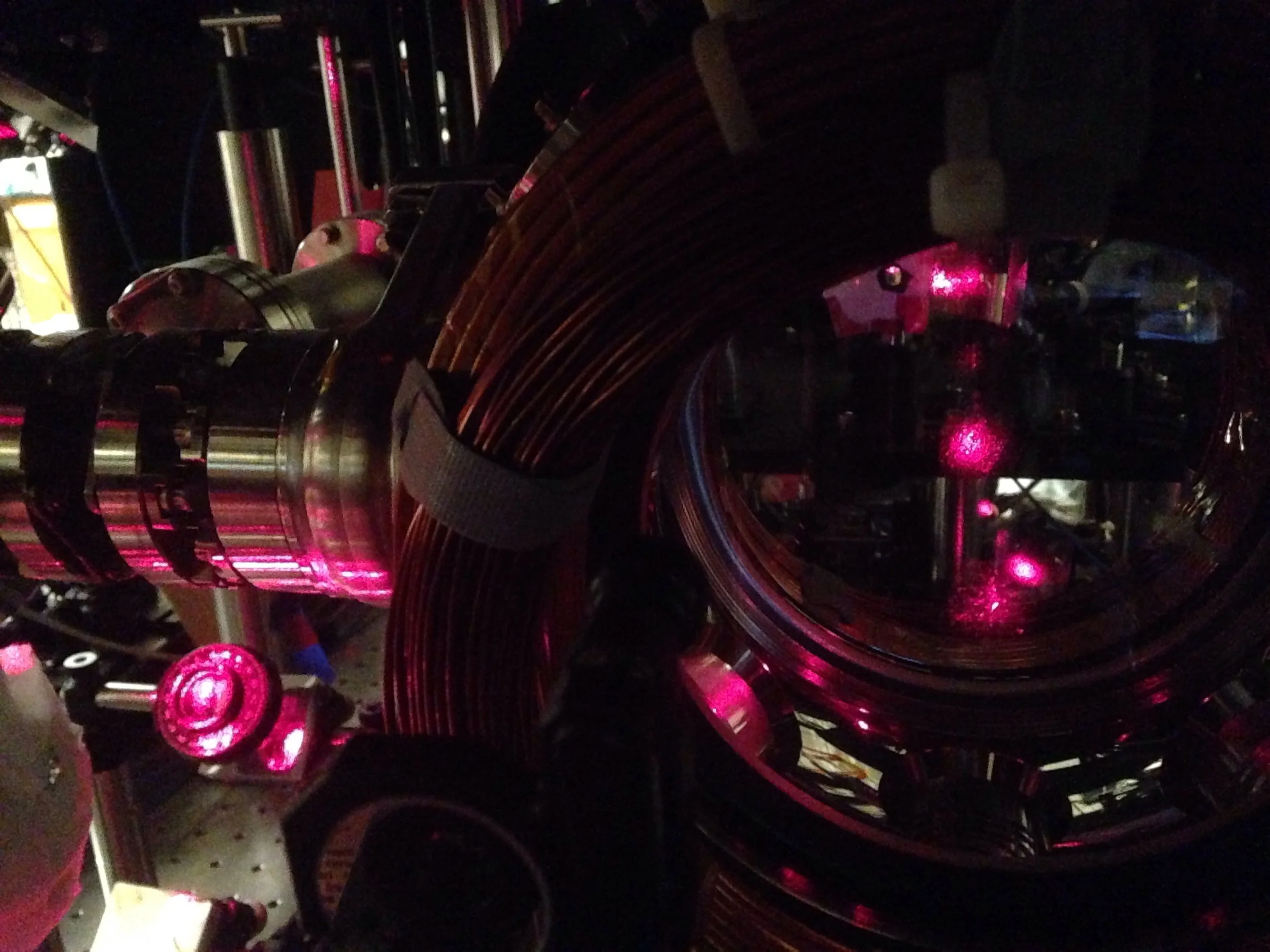Interferometry with lukewarm lithium
Measuring the fine-structure constant with atom interferometry constitutes a low-energy, tabletop search for physics beyond the Standard Model, like dark matter. These measurements require laser cooling to slow particles and permit the long observation times required for sufficient precision and full quantum control. The alkali metals like Rubidium and Cesium are relatively easy to cool by established methods because of their structure, however most particles do not yield to cooling so readily. Lithium is harder to cool than its alkali cousins, but its low mass and high recoil speed offers a considerable advantage for sensitively measuring the fine-structure constant. By eschewing advanced cooling methods, we can enjoy higher particle numbers and enable more measurements per second, both of which grant increased sensitivity. We have reported the first demonstration of interferometry with laser-cooled lithium and developed a new toolkit of techniques for recoil-sensitive interferometry. Even lighter are bare electrons, but they can only be cooled to scorching tempteratures by the standards of those of us who cool neutral atomic species. We anticipate that the techniques we are developing on the lithium table will one day be applicable to electron interferometers.
Cold Lithium Interferometry and the Equivalence Principle
Does gravity truly accelerate all masses at the same rate? Einstein's (weak) Equivalence Principle states that a gravitational field accelerates all objects equally, regardless of mass. A violation of the Εquivalence Principle is intimately related to a violation of Lorentz symmetry. The Standard Model Extension (SME) is a general framework that parameterizes Lorentz violations by describing different gravitational couplings for electrons, protons, and neutrons, and can be used to describe violations of the Equivalence Principle. For a bound system of these particles like the atoms we use in atom interferometers, the total deviation of the gravitational acceleration depends on the kinetic energy of the particles within the nucleus and the number of neutrons. A precise measurement of the difference in gravitational acceleration for lithium-6 and lithium-7 provides one of the most sensitive tests of the SME parameters available. We will use atom interferometry to test the Equivalence Principle by measuring the difference in gravitational acceleration felt by lithium-6 and lithium-7 to a projected sensitivity of Δg/g~10-14.
The Lithium Team
Kayleigh Cassella
Eric Copenhaver
Past team members
Paul Hamilton
Geena Kim
Dennis Schlippert
Biswaroop Mukherjee
Trinity Joshi
Daniel Tiarks
Publications
Measurement of a 7Li tune-out wavelength by phase-patterned atom interferometry. Eric Copenhaver, Kayleigh Cassella, Robert Berghaus, and Holger Müller, Phys. Rev. A 100, 063603 (2019) and arXiv:1904.08974 (2019).
Recoil-Sensitive Lithium Interferometer without a Subrecoil Sample. Kayleigh Cassella, Eric Copenhaver, Brian Estey, Yanying Feng, Chen Lai, and Holger Müller, Phys. Rev. Lett. 118, 233201 (2017), and arXiv:1610.07588.
- Secondary reports about this work
- APS Focus: Interferometer for lighter atoms.
- Secondary reports about this work
Sisyphus cooling of lithium. Paul Hamilton, Geena Kim, Trinity Joshi, Biswaroop Mukherjee, Daniel Tiarks, and Holger Müller, Phys. Rev. A 89, 023409 (2014), and arxiv:1308.1935.
Equivalence principle and bound kinetic energy. Michael Hohensee, Holger Müller, and R. B. Wiringa, Phys. Rev. Lett. 111, 151102 (2013), and arxiv:1308.2936.
